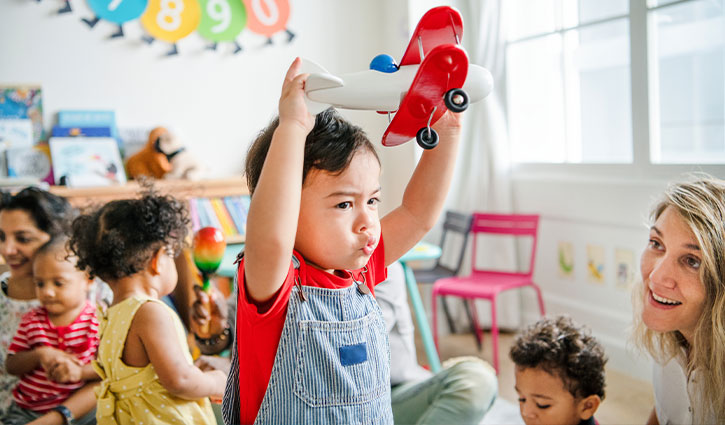

To support baby and toddler development, we need to ask less questions and name more. What does this mean, exactly? It means putting words to your child’s experience, rather than asking them about it. This supports emotional, social and language development and it strengthens your connection with your child.
Why is asking too many questions unhelpful?
Because when a child is playing and they are asked a question, their brain switches into problem solving-mode. They are pulled out of an exploratory, playful moment to problem-solve, sometimes beyond their developmental capacity, with the added expectation of answering the question correctly.
Asking questions is by no means damaging to your child in any way but there are other ways parents can naturally support emotional and social development in babies and toddlers.
Less questions, more naming: How to support your toddler’s development
So, if you can’t ask questions, what do you do instead? The answer is: naming.
Naming Initiatives
An initiative is the potential starting point of your child interacting. This may be an action, facial expression or sound.
Naming initiatives is important in Marte Meo, a parenting approach developed in Holland, to support child development through everyday interactions with their parents. When you follow your child’s interest and describe what your child is doing this helps your child make sense of their world.
Sometimes, parents get caught up asking too many questions. A child presents a block, and the parent asks “What colour is it?” The child has presented the block for confirmation and connection, but the moment then shifts into a “teaching” moment. This can create a disconnect with your child. Your child presents the block to show you their interests, to be seen and to feel connected to you.
Here’s an example of naming, rather than asking questions:
He does: Harry holds up the red block.
You say: You are holding up the red block.
This approach of “he does, you say” (or she does/ you say) is taught in Marte Meo so parents can help their children learn in a naturally supportive way. Parents are encouraged to be mindful to give their child enough time to process the information.
In the example above, Harry learns language, that he is an interesting person, and someone is “with him” in his moment. This is important for connection.
As he gets older, he can learn to do “he does, you say” language with other children at the playground, preschool and primary school. When Harry is able to show other children he can follow their lead in play, he can be in their moment, and this can help him make friends. When a child can be “with” another child, they learn empathy.
When you name what your child is doing and the objects around them, you create a detailed language landscape in which your child can learn and develop. The teaching and learning happens naturally.
Keep talking
The key message here is to keep talking to your child throughout the day about what is happening and what they are doing. Ask less questions and try naming their initiatives instead.
For more information on the Marte Meo method, click here.























